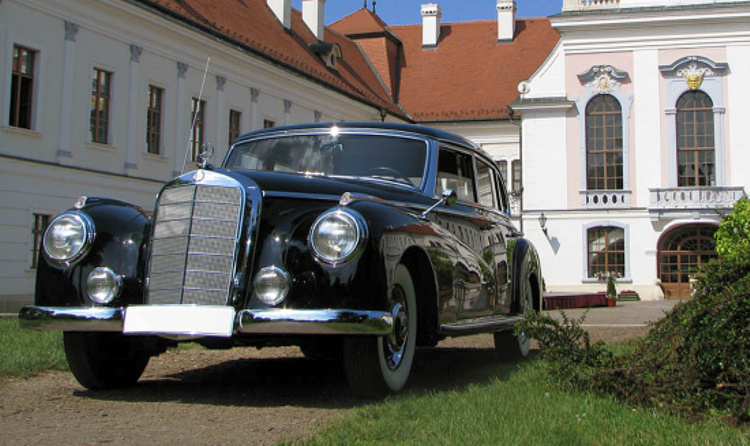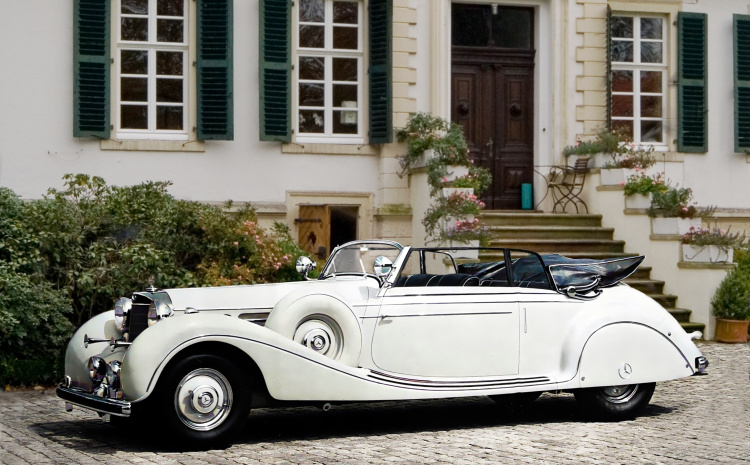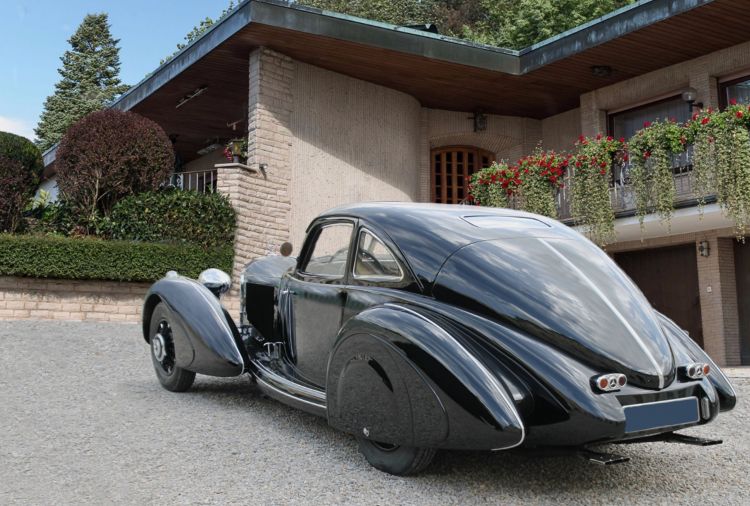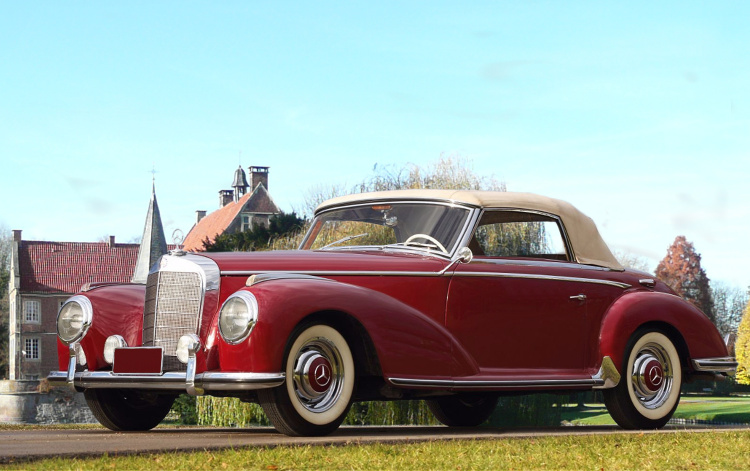Mercedes 540K W29, an icon of the 1930s
Mercedes 540K: Instrumental in development of the new generation of cars such as the 380, 500K and 540K was Hans Nibel. He was the chief engineer for Benz before the merger with Daimler in 1926. He succeeded Ferdinand Porsche on his departure in early 1929. Nibel had gained much of his experience on the enormous Blitzen Benz racers before WWI.
He and his colleague Hans Wagner had cooperated on the independent suspension that was first seen on the new 380. His last contribution would be the supercharged 500K engine, as he died of a stroke soon after in 1934.
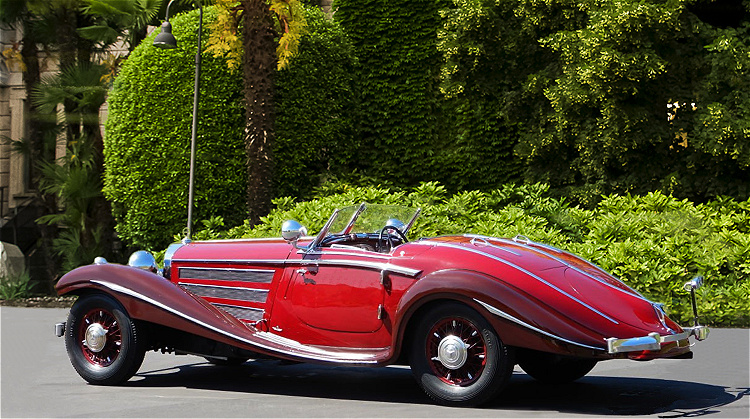
A 1937 540K Special Roadster, formerly owned by the King of Afghanistan, shows that the design initially did not change from the respective 500K predecessors
With cars like the S and SS models, the 770 and the 500K, Daimler-Benz was prior to World War II arguably the world’s most prestigious European automaker. It was followed by Rolls-Royce, Maybach, Bentley, Horch, and Hispano Suiza. These were the cars of kings and captains of industry alike.
A larger engine was introduced
So in order to stay ahead of the pack, management decided that the 500K could do with a bigger M24 engine. At the end of April 1936, its displacement was increased to 5.4 liters. This was achieved by adding 2 mm to the bore, while the stroke was lengthened by 3 mm. This increased the power output to 115/180 hp without and with the supercharger engaged.
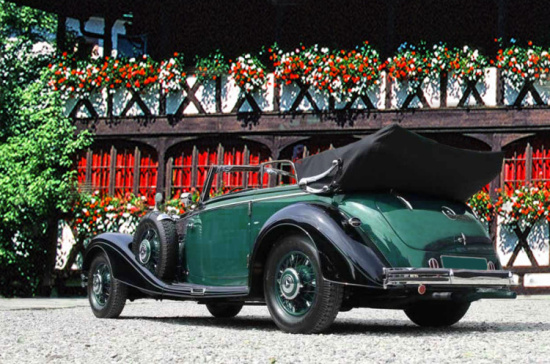
A 540K Cabrio B and part of its interior

New were sodium-cooled exhaust valves that withstood even brief overstress. The Jumo fuel pump had now found its place on the right side of the cylinder block. An automatic ignition adjustment was also among the innovations. The vertical double carburetor, whose two air funnels supplied the four middle cylinders and the front and rear pair of cylinders separately, had been taken over from the 500K. The air filter and intake manifold were also replaced.

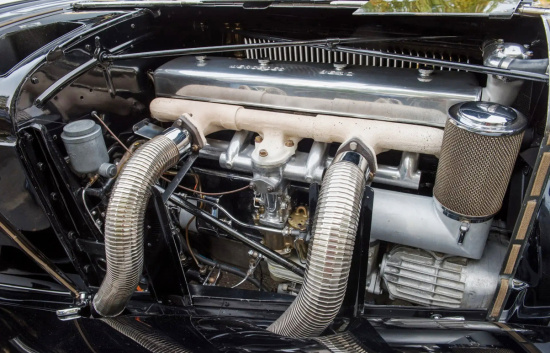
It was obvious that the 5.4-liter engine was now on a par with the chassis. This way it was better able to compensate for the high weight of the chassis and superstructure. The engine proved to be as refined as ever and conveyed its power even more unobtrusively at best. The improvements to the intake system dampened the screech more effectively than on the 500K when the rotary fan was switched on. The Mercedes 540K was the last Daimler-Benz model to feature a honeycomb radiator.
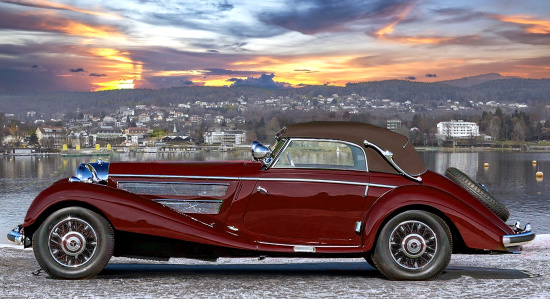
A very elegant looking 540K Cabrio A
The chassis of the Mercedes 540K saw only little improvements over the 500k
The chassis of the Mercedes 540K had like the 500K a wheelbase of 3290 mm and was again available in two versions. In addition to the standard version, there was a variant in which the radiator, engine/transmission unit, steering gear and seats were all set to the rear by over 10 cm. As an additional option, which was not included in the price list, it was also possible to order a chassis with the shorter 2980 mm wheelbase. It was used for a Roadster or Cabrio A body.
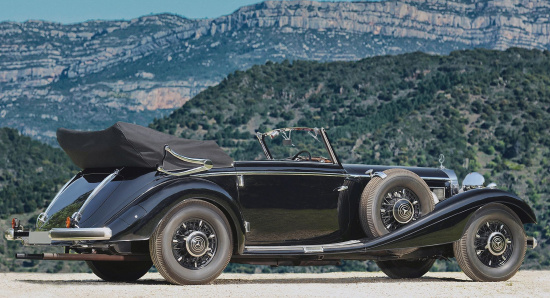
A rhd 540K Cabrio C and its interior

The 500K’s overdrive transmission was adopted for only a short period of time. It was replaced just six months after the 540K’s introduction by a conventional four-speed transmission. The fourth gear acted as a direct transmission, but the first was still unsynchronized. Despite the synchronizer of the three upper gears, the manual still recommended an intermediate clutch.
For the 1939 Berlin Motor Show, the 540K then received a five-speed transmission with almost the same gearing. The top gear was an integrated highway gear with a 1:0.80 ratio. But let us go back now to the car’s launch.
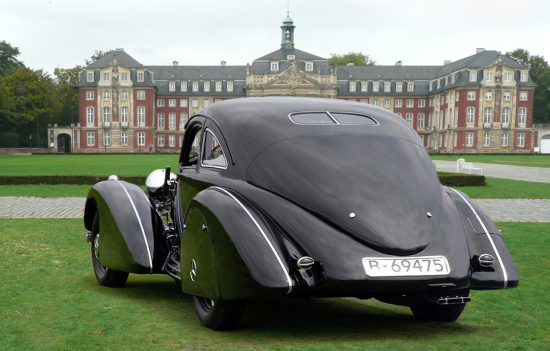
Mercedes 540K Autobahnkurier and its interior
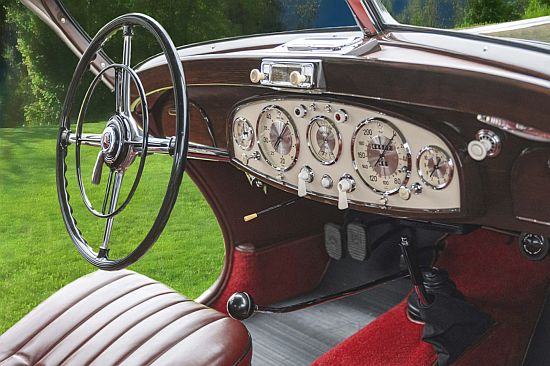
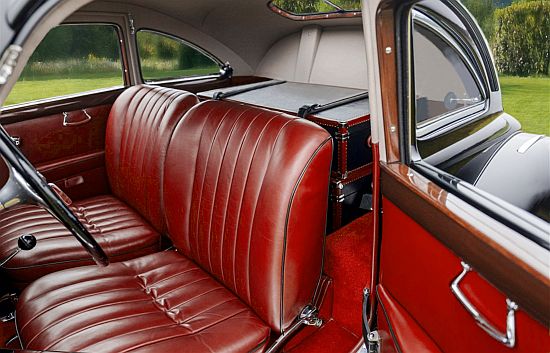
It was September 1936 before the model designation was brought into line with the increased displacement. The Mercedes 540K had its official launch in early October at the Paris Motor Show. Initially the same body variations that could be ordered for the 500K were also available for the successor model:
- Autobahnkurier
- Coupé
- Sedan two-door
- Sedan four-door
- Open Tourer
- Cabriolet A
- Cabriolet B
- Cabriolet C and
- Roadster

Just 32 units of the 540K Cabrio C were produced
But this should not last for long, because by February 1937 the price list no longer included the Autobahnkurier. One year later, in February 1938, the same fate was to befall the Cabriolet A and C. Also the chassis with rear-set engine was no longer available.
By early 1938 fewer models were available
At the same time, a modified version of the Special Roadster based on the standard chassis came with design modifications mainly to the front wings and rear section. The fenders were cut out less boldly and embraced the wheels in a more purposeful manner. The radiator moved close to the level of the front wheel center. And the immense length of the hood was reduced to the dimensions common on the other models.
As a result, the cockpit gained in spaciousness. The rear end — to provide more capacity for luggage storage — was made more voluminous and now looked nowhere near as elegant as the long-tail versions. The spare wheel was concealed in the luggage compartment. A second spare wheel was supplied loose and could be attached by means of a temporary bracket above the trunk lid if required.
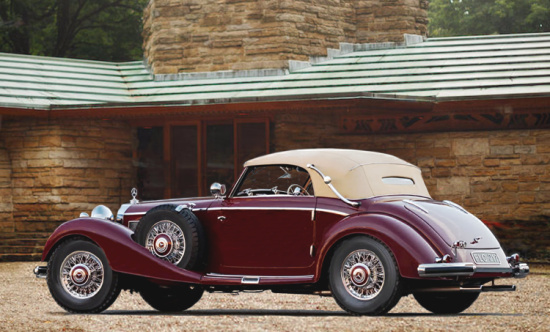
Not only the Cabriolet A (above) was revised, also the Spezial Roadster (below) saw similar changes


Just to give you an idea how much these cars could be individualized, the above car is a Spezial Roadster that was ordered in 1939 by the Berlin art dealer Rolf Horn. Another such example is the car below that was ordered by German industrialist Alfried Krupp in 1939. After WWII it was used for a short time by Prince Bernhard, the German husband of Queen Juliana of the Netherlands.


Prince Bernhard at the car’s door with fellow officers
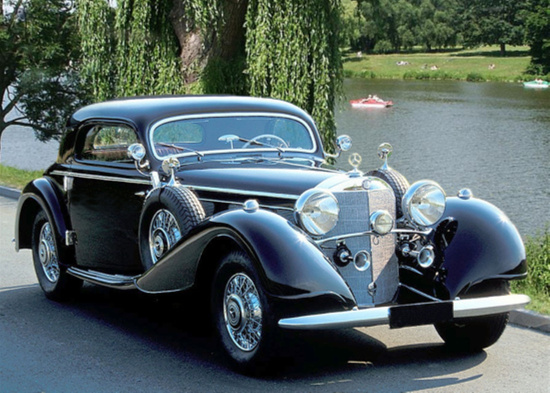
Also the Coupé was revised, here a 1938 model
As with the predecessor, two short-haul passengers were provided with cramped seats in the “mother-in-law or rumble or dickey seat”. It could be entered via fold-out steps on both sides of the body. The unpadded soft top was of course fully retractable.

A two-door Open Tourer
In 1939 a larger displacement engine was tested with the Mercedes 540K
The Open Tourer was dropped from the February 1939 price list. In that year experimental 5.7-litre engines were built. They had a 7 mm wider bore, but 5 mm shorter stroke than the 5.4?litre unit. Why they were developed is not entirely clear, because at the same time the company was working on new V12 engines. But that is for another blog
Regardless of the variants, the Sindelfingen facility produced numerous non-standard bodies. Sometimes in response to specific customer wishes, but sometimes it was done on its own initiative. Here are just four of them, more you can find in my book:
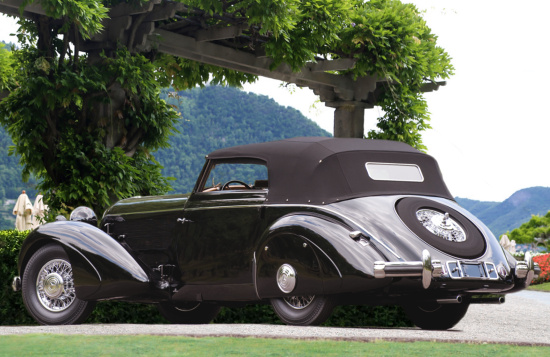
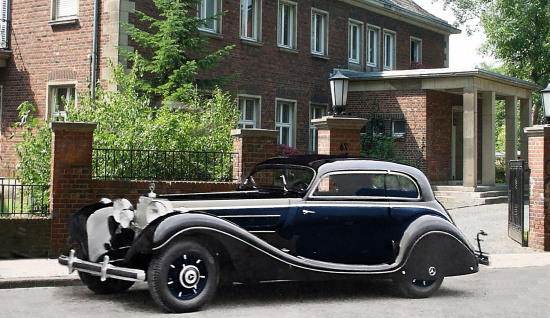
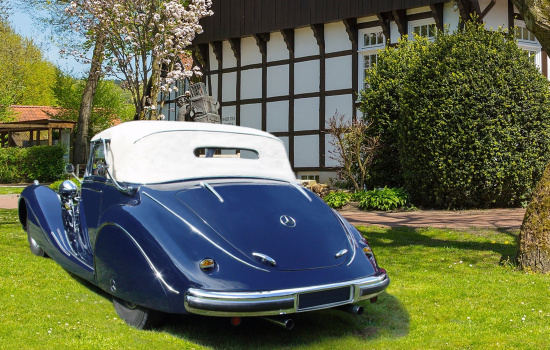
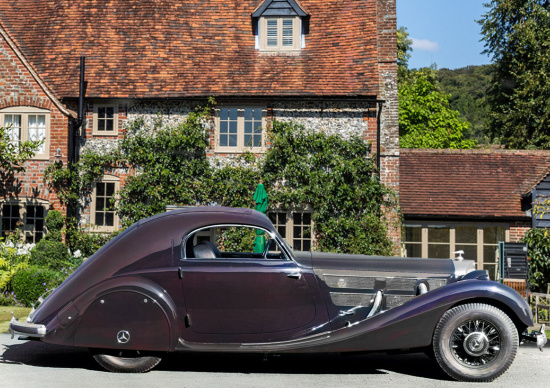
Here is a breakdown of the various versions produced:
- Cabriolet B: 190
- Cabriolet A: 83
- Cabriolet C: 32
- Roadster: 29
- Sedan two-door: 28
- Open Tourer: 12
- Coupé: 9
- Sedan four-door: 5
- Autobahnkurier: 2
- Chassis: 29
An armored “Action P” Car was introduced in Nov. 1942
Another unusual variation was the “Aktion P” initiative of the Reich Chancellery in the summer of 1942. It was the result of the assassination of General Heydrich. 20 armor-plated special two-door sedans were produced and delivered between November 1942 and February 1943. In November 1943 another order of further 17 armor-plated sedans was received. But it is not clear whether those were ever produced.
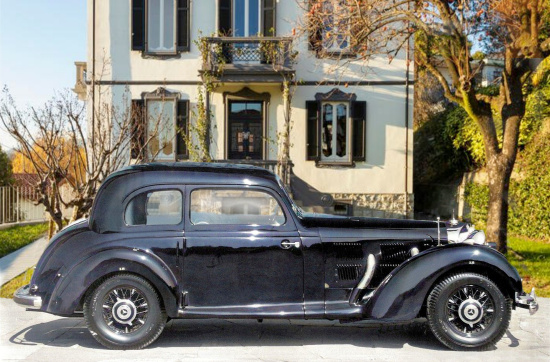
A 540K Aktion P car, three of them have survived
The Mercedes 540K was popular with outside coachbuilders
Here are a few photos of cars, produced by individual coachbuilders. The first two photos show cars built by Erdmann & Rossi, the third one shows a car built by Petera. The fourth one is a Voll & Ruhrbeck model and the fifth one a DHC by Vanden Plas.

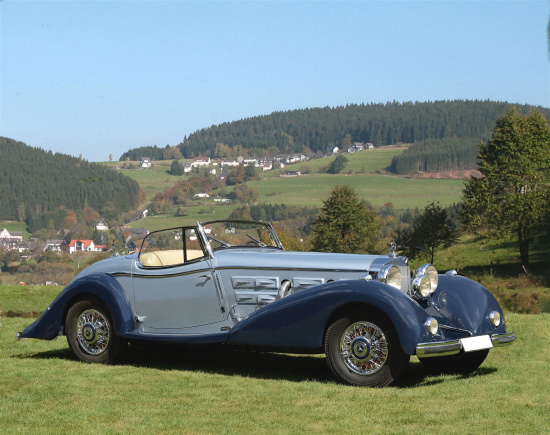
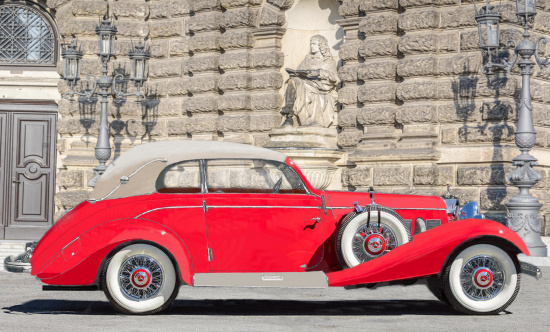
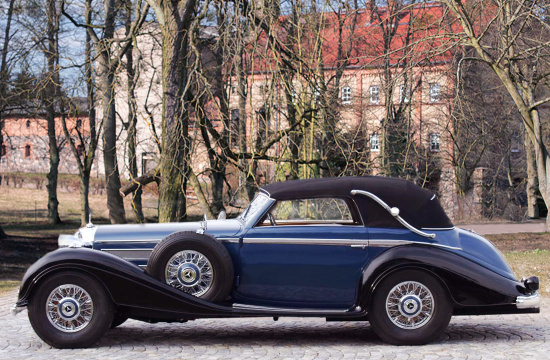
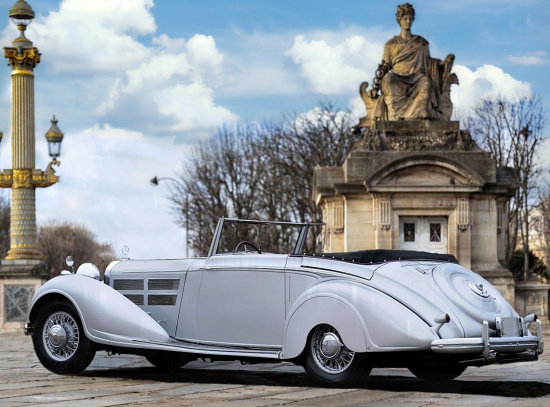
With the 500K and 540K, the engineers in Stuttgart and Sindelfingen created automotive legends which still today inspire enthusiasm for Mercedes-Benz automobiles. It is thus no coincidence that both models are today among the most sought-after of classic cars.
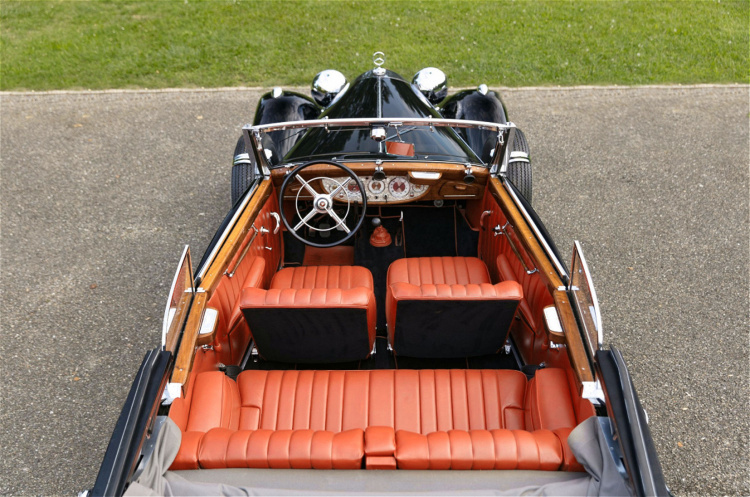
If you want to know more about the development and history of these fascinating cars, here is the link to my book about them. With over 240 pages, it covers next to the 500K and 540K models also the rare Sindelfingen one-off cars and those created by sixteen coachbuilders from Barker to Voll & Ruhrbeck. Another chapter deals with the V8 and V12 prototypes. Many new color photos, never published in a book before, show you interesting details of most of the cars.
The Link leads you to the US Amazon site. The title of the book is the same on Amazon in other markets.
